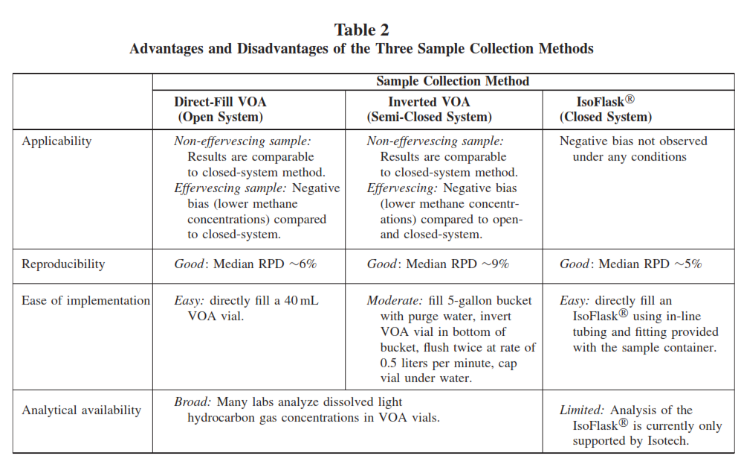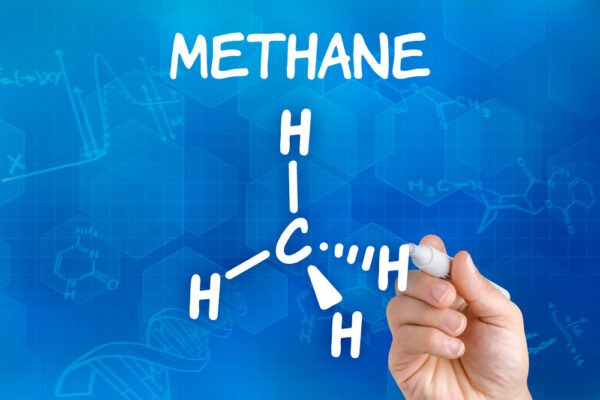In this Volume, we are distributing industry reports that discuss issues associated with methane production, exposure, and monitoring. We hope you find them useful.
NEW REMEDIATION GUIDANCE DOCUMENT
February 22, 2016 the State of Michigan published guidance for practitioners involved with in situ remediation (see link). With specific regards to methane and its potential impacts, recommendations are provided for including methane during monitoring of:
Soil Gas: Monitoring should be done “…before, during, and after implementation of an in situ remedial discharge when the contaminants of concern or remedial reagents have the potential to lead to vapor or explosion hazards. This includes circumstances where a remedial discharge has the potential to generate, mobilize, or displace vapors or generate higher than normal concentrations of oxygen gas, and these vapors or gases have the potential to migrate into enclosed spaces. …. Soil gas monitoring is generally conducted for the purposes of sentinel monitoring to protect specific receptors; therefore, action levels should be specified for soil gas monitoring that will trigger specified response activity or corrective actions necessary to protect receptors…. The RRD Guidance Document for the Vapor Intrusion Pathway should be consulted for guidance on soil gas monitoring.”
Indoor air and Enclosed Spaces: “Air monitoring of enclosed spaces such as storm sewers, utility man-ways, etc. should be included in the monitoring program for any facility where vapor or explosion hazards are a concern…”
Ambient Air: “Monitoring is warranted whenever a discharge has a reasonable potential to generate concentrations of vapors in ambient air that either present unacceptable inhalation exposures to workers or non-workers, or that could present a risk of fire or explosion. In most applications, in situ discharges are applied at some depth beneath a cover material (i.e., soil and/or pavement), which usually inhibits the rapid diffusion of vapors to the surface, thereby minimizing the ability of gases or vapors to accumulate at hazardous concentrations in ambient air. However, this alone does not necessarily preclude the need for ambient air monitoring.”
In determining whether or not ambient air monitoring is necessary as part of an in situ remedial strategy, the following should be considered:
- The concentrations of contaminants in soil or groundwater, especially where grossly contaminated media is present;
- The concentrations at which contaminants of concern or remedial constituents become toxic in air, especially if toxic at very low concentrations;
- The potential for explosive conditions to develop, in light of the chemical properties of the contaminants of concern and potential by-products from the discharge (e.g., generation of oxygen gas);
- The proximity of the treated media to the surface;
- The properties of the soil and/or cover above the treated media
- Whether engineering controls are implemented as part of the remedial process, such as soil vapor extraction, that will otherwise stop the migration of gases or vapors to the surface; and
- The presence of conduits to the surface for gases and vapors, such as monitoring ortreatment wells, that can result in the impact to the breathing zone air.
METHANE EXPOSURE AND AIR MONITORING
An informative video on the importance of monitoring methane was provided at the following link, View Report.
MONITORING METHANE IN GROUNDWATER
A recent paper by Molofsky et al 2016 (view paper) quantitatively evaluated three methods for collecting and analyzing dissolved methane and other gases in groundwater. In summary, they found that effervescence had a large impact on data obtained, and that the ” IsoFlask ” sampling yielded more accurate data under these conditions (see Table below). Effervescence is commonly observed where conditions are highly organic and reducing, such as LNAPL source area and sites where conventional (i.e., no active control of Archaea) ERD or ISCR reagents have been employed. In the absence of effervescence, the difference in methane concentrations between the three sampling methods was relatively small.



